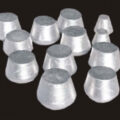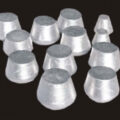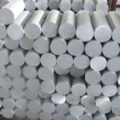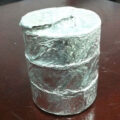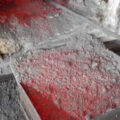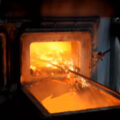Modification treatment changes the eutectic silicon from coarse flakes to fine fibrous or lamellar flakes, thereby improving the properties of the alloy. The modification treatment is mainly to refine the second phase or change its morphology and distribution. In this article, it mainly focuses on the eutectic silicon in the aluminum-silicon alloy. When it is not modified, the eutectic silicon is in the shape of coarse needles and flakes, which leads to the decrease of the mechanical properties of the alloy, especially the toughness. Metamorphism is the process of changing the morphology and size of eutectic silicon, changing the shape of the original eutectic wafer into fine fibers or lamellar shapes.
According to the form of the modifier in the molten metal, the deterioration mechanism is divided into two types: one is the non-homogeneous crystal nucleation of the insoluble point in the molten metal; the other is the presence of the solute in the molten metal segregation and adsorption.
The single modification treatment study of Al-Si alloy shows that the elements that have a modification effect on eutectic silicon are: sodium (Na), strontium (Sr), rare earth element RE, antimony (Sb), hoof (Te), barium (Ba).

Sodium has strong metamorphic ability and is the first and most widely used. Adding a small amount of about 0.005% to 0.01% can change the eutectic silicon phase from needle-like to completely uniform fibrous. However, there are some shortcomings, such as the deterioration effect is easy to decay, which can only be maintained for 30 minutes, the absorption rate is low, the inhalation tendency of the melt is increased, the density is small, the tools and equipment are easily corroded, the health of workers is damaged, and the environment is seriously polluted. In response to these shortcomings, people have taken various measures such as: improving the packaging of metallic Na, accelerating the reaction of Na-based salt modifiers, and extending the action time of Na-based modifiers, but they can only be partially resolved. Therefore, on many occasions, sodium deterioration is gradually being replaced by some long-term deterioration methods.
Sr modifier is a long-acting modifier, the degeneration effect is equivalent to Na, and there is no such shortcomings as Na degeneration such as short duration of the degeneration effect and environmental pollution. It is a widely used modifier at present. In industrial production, Al-Sr alloy containing 10% strontium is commonly used as a modifier. Its melting range is between 654 and 770°C, which is easy to be absorbed by molten aluminum. The recovery rate can reach 70% to 80%, and it is easy to store.
In summary, Sr modifier has the following advantages: the deterioration effect is good, and the deterioration effect can be maintained for 68 hours; during the deterioration operation, it is convenient to operate, non-toxic, does not pollute the environment, does not corrode equipment, and does not harm health. It is easy to obtain satisfactory mechanical properties for castings. It has a certain remelting effect; the casting product rate is high, and the comprehensive economic benefits are significant.


